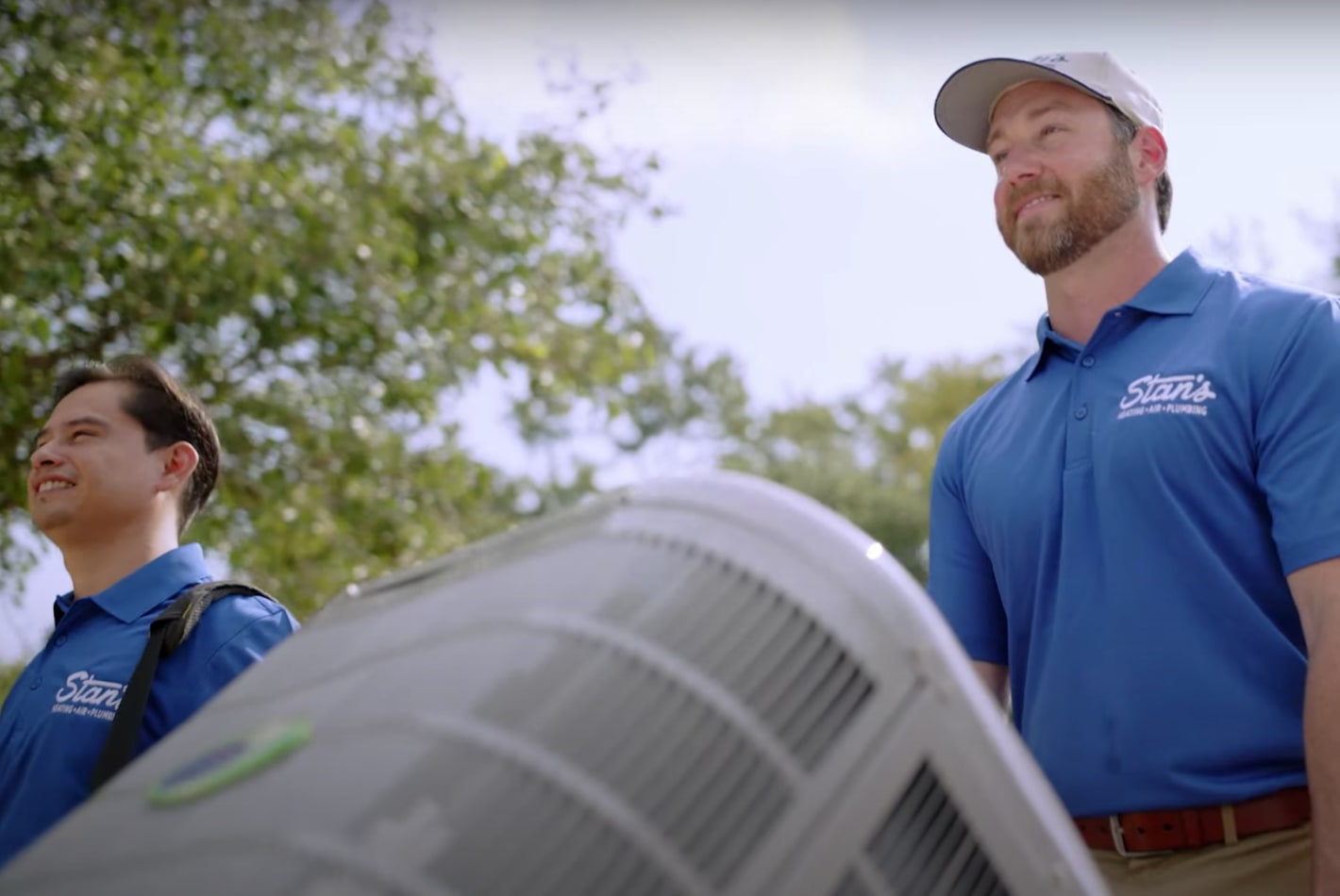
If you’re a long-time Austin homeowner, you’re likely familiar with the acronym HVAC, but have you ever wondered what it stands for, or what it means? In this short post on the Stan’s Heating, Air & Plumbing blog, we’ll explain just that and more. From understanding words like heating and ventilation, to learning how your HVAC system really works, you’re guaranteed to learn everything you need to know to feel confident before, during, and after your HVAC repair in Austin.
Short on time? Watch this 2-minute video to find out what HVAC means and how it works!
HVAC is an acronym that stands for heating, ventilation, and air conditioning. Put simply, a HVAC system refers to the equipment, technology, and processes that go into heating, cooling, and ventilating your home. Whether you own a home or a commercial property, your HVAC system is what moves, filters, heats, and cools your air so that it’s comfortable all year.
All HVAC systems–regardless of make or model–have 3 common elements that work the same from system to system. These elements include:
HVAC systems work by transferring heat. During the cooling cycle, the thermostat monitors the set temperature you prefer. Once the temperature rises a degree, the outdoor unit starts and the refrigerant begins to move through the loop, pulling the heat from the air inside the space that the blower motor pushes across the evaporator coil. The heat is then captured in the refrigerant and dispersed outside by the outdoor units fan, and the cooler air is pushed throughout the space by the duct system. This cycle will just continue until the thermostat is satisfied. The heat pump system does the same during the cooling cycle and switches the flow of refrigerant during the heat cycle to transfer the heat from outside to inside.
A gas furnace on a conventional system does not use refrigerant to heat. The furnace has a heat exchanger and blower that work together in order to heat the space. Cold air is pulled through the return side of the furnace and pushed across the heat exchanger. Burners heat up the heat exchanger and hotter air is now distributed throughout the home through the duct system until the thermostat is satisfied.
We hope this post has helped bring clarity to what an HVAC system is and how one works. Should you experience a problem with your HVAC system and need HVAC repair in Austin, you know who to call!Stan’s Heating, Air, & Plumbing is the go-to company for thousands of Austin homeowners each year. Our team of experienced Austin HVAC repair technicians is second to none and know everything there is to know about keeping your home comfortable. Whether you have a problem with your furnace, ventilation, or air conditioner, we can have your HVAC system up and running in no time.
Contact us to schedule your expert heating and air conditioning repair in Austin today!